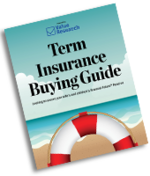
Over the last two decades, in the various websites and magazines that Value Research publishes, I have observed that negative articles are not popular. What's a 'negative' article, you might ask. A negative article or analysis tells you what's bad in saving or investing. It explains what not to do. A positive one tells you what is good and explains what you should do. A positive article is about making money. A negative one is about not losing money.
Equity investors don't like to read about how not to lose money. They're inherently optimists. You might think that equity investing makes people optimists, but that's not really true. The cause and effect are the other way around. Only people who are inherently optimists tend to become equity investors. To start investing in equities, you need to have a strong, inherent belief that tomorrow will be better than today.
I'm sure you now understand why equity investors do not like to read negative stories. If I was only worried about growing our readership and keeping everyone pleased, Value Research would also focus only on happy-happy stories. Unfortunately, investing is actually a little more complicated than that.
Mistakes (bad decisions) can cause far more damage to your investment value far more quickly than can be countered by good investments. There are lots of stocks that have gone down to a tenth of their value. If you invested in any of these and stayed on in mistaken confidence and optimism, you would need a 10x investment to balance it out. Of course, 10-baggers are really, really hard to find. Not just that, finding a 10-bagger and then finding enough confidence to stay put and grab all 10 bags is even harder!
So it becomes clear that if you want to invest profitably and safely, what you don't do with your money could be more important than what you do. So how do you avoid mistakes? The first step is to overcome your aversion to negative stories and read up about high-profile failures.
Some of these companies are victims of bad management, some have crooked management, and some fall prey to external circumstances. Our job as investors and investment analysts is to look at the underlying patterns and then see if they exist elsewhere. Essentially, we should make those patterns (and many more) as warning signals and ensure that they do not exist in any stocks that we are tempted to buy.
This principle is not just something we write about in our articles, it is also an integral part of our analytical process. In our premium investment advisory service, Value Research Stock Advisor, we have made this principle a core part of our stock-selection methodology. Our analyst team has evolved a list of negative characteristics that none of our recommended stocks should have. No matter how good a stock looks, if it has any one of the red lights glowing, we will reject it without a second thought.
However, even this is not enough in equity investing. Companies will find new ways of blowing up. Promoters and managements will invent new types of malfeasance. Ultimately, the only protection you have against such negative events is diversification. In a long enough investing career, everyone will be hit by a few wealth destroyers - I have had some personally. The only deep defence is to be diversified so that you can just shrug, accept the loss and the learning, and move on.









